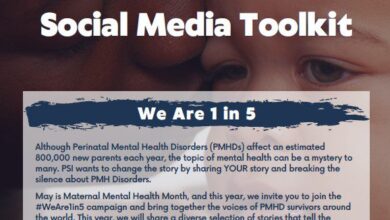How To Get Your Baby To Take A Pacifier

Share The Mummy, it’s OK Love!
Hey, awesome parents and guardians! Is your munchkin putting on a great “no pacifier” show? Well, you’re not alone here! Getting your baby to drink a pacifier can sometimes feel like trying to solve a Rubik’s cube blindfolded. But, don’t worry! Today, we’re diving deep into the wonderful world of pacifiers, discovering tips, tricks, and heartfelt advice on how to turn your baby into a pacifier fan. So, grab a comfortable chair, your favorite drink, and let’s solve it together!
Understanding the Pacifier Predicament
Before we delve into magical solutions, let’s understand the “why” behind pacifier resistance. Babies, like us, have their preferences and comfort zones. Some may take to a pacifier immediately, while others may view it as a strange alien object. It’s all part of their unique journey. Pacifiers can be soothing, help reduce the risk of SIDS, and be a real lifesaver during bad times. But getting there? That’s our quest! According to the American Academy of Pediatrics, using a pacifier can give babies a strong sucking reflex and the comfort they crave. Their recommendations, along with insights from American Academy of Pediatric Dentistry and the American Academy of Family Physiciansguide many of the wisdom shared here.
The Benefits of Baby Using a Pacifier
Pacifiers have been a go-to for parents for generations, offering so many benefits:
- Soothing: A pacifier can greatly soothe and calm a crying baby, satisfying their natural urge to suck.
- Reducing the Risk of SIDS: Use of a pacifier at bedtime and bedtime has been linked to a reduced risk of sudden infant death syndrome (SIDS).
- Pain Relief: This is a useful tool for pain relief during vaccinations and minor procedures – it’s a simple trick that works wonders!
Choosing the Best Pacifier: Shapes, Sizes, and Materials
Choosing the right pacifier is important for your baby’s mouth and overall comfort.
- Different Shapes: Orthodontic or traditional, each shape meets different needs and can affect your baby’s teeth and oral development.
- Different Sizes: Choose according to your baby’s age. A newborn baby has different needs compared to older babies or toddlers.
- Materials: From silicone to latex, each material has its own set of benefits. The American Dental Association provides guidelines for safe materials.

Introducing Pacifiers: Tips and Tricks
The first time you introduce a pacifier, it can set the tone for future use. Here are some best practices:
- Timing: The best time is when your baby is calm. Introducing it at a difficult time or in the middle of the night can lead to disappointment.
- Procedure: A warm pacifier (wash in warm, soapy water) can be more comforting. For breastfed babies, it’s a good idea to wait until breastfeeding is well established to avoid nipple confusion.
- Non-nutritive sucking: Understand that pacifier sucking is different from bottle or breast feeding. It is a natural behavior that provides comfort more than nutrition.

Troubleshooting Common Issues
- Pacifier Dependency: Gradually reduce pacifier use starting at age 2 to avoid long-term dependency.
- Dangers of Pacifier Use: Be aware of the risk of middle ear infections, especially in older children.
- Breastfed Babies vs. Formula-Fed Babies: Breastfed babies may have a different introduction to pacifiers than formula-fed babies, given their need to establish a milk supply first.
- Baby kept spitting it out: Gently hold the pacifier to their mouth for a few seconds to see if they start sucking.
- Baby is disappointed: Make sure the pacifier is not too big or too small, and check for signs of wear.
The Dos and Don’ts of Using a Pacifier
- Clean it regularly: Always make sure the pacifier is clean and undamaged.
- Don’t force it: If your baby resists, take a break and try again later. This is a natural instinct but not preferred by all babies.
- Get rid of you at the right time: Around 2-3 years old is recommended to avoid dental issues.

Mastering the Art of Pacifier Weaning
When the time comes, weaning off the pacifier is another journey. Start by limiting the time your baby spends on the pacifier, then slowly progress to offering it only during naps and bedtime. Introduce other forms of comfort, such as a soft blanket or a cuddly toy. Be patient and understanding – this is a big change for your child!
Weaning Off the Pacifier: Friendly Strategies
- Cold Turkey vs. Gradual: Get to know your baby and choose the method that suits their temperament and your parenting style.
- Extra Comfort: Replace the pacifier with extra hugs, a favorite toy, or a blanket.
- Reverse Psychology: Sometimes, offering an older style or a different type of pacifier that they don’t like can make them lose interest themselves.

Consulting with Experts
- Family Doctor or Pediatrician: Always consult them for medical advice, especially for newborn babies, premature babies, or if your baby has specific health needs.
- Lactation Consultants: They can provide advice on successful breastfeeding and pacifier introduction to avoid milk supply issues.
Safety First: Ensuring Safe Pacifier Use
- Follow Best Practices: Only use pacifiers designed for sleep if you leave them with a baby in a crib.
- Monitor Baby’s Health: Watch for any signs of oral discomfort or increased ear infections.
- Cleanliness: Regularly clean the pacifier with warm, soapy water and replace it every few months.
Celebrating Milestones
Remember, every baby is unique, and whether or not they wear a pacifier is not a reflection of your parenting. Celebrate small victories, whether it’s a full night’s sleep or successfully weaning the pacifier. You are doing great!
In summary
Getting your baby a pacifier can be smooth sailing for some and a challenging journey for others. It’s all about understanding your baby’s needs, being patient, and trying different approaches. Remember, you are not alone in this. Countless parents have walked these waters before you, and with a little patience and a lot of love, you can find the way that works best for your little star.
So, here’s to peaceful nights and happy babies! May your pacifier adventures be filled with joy and success. Keep being the amazing parent that you are, and know that every small step you take makes a big difference in your baby’s world. Cheers to you and your son on this peaceful journey! And when in doubt, always feel free to consult your healthcare provider or lactation consultant for personalized advice and support. Happy parenthood!





